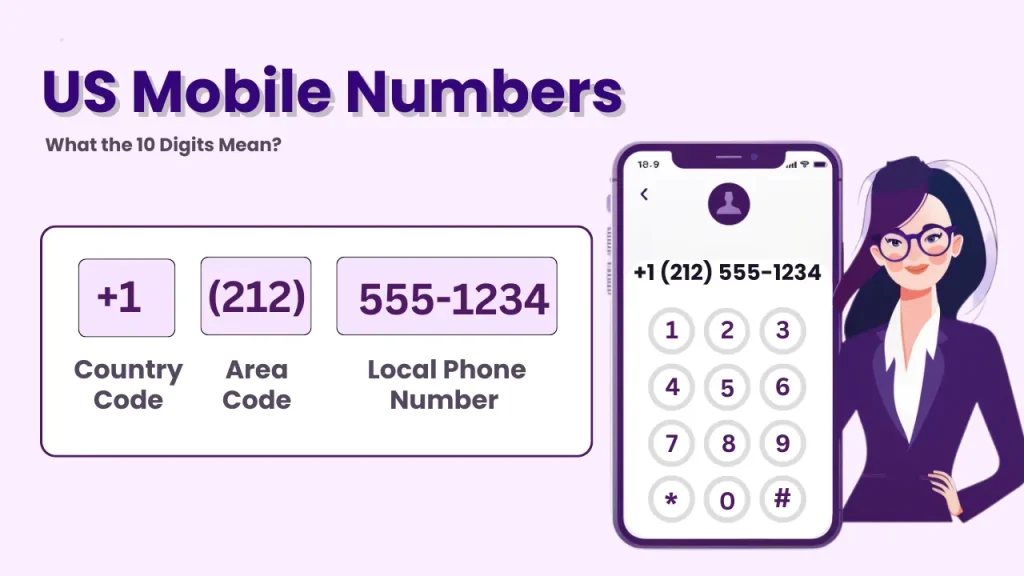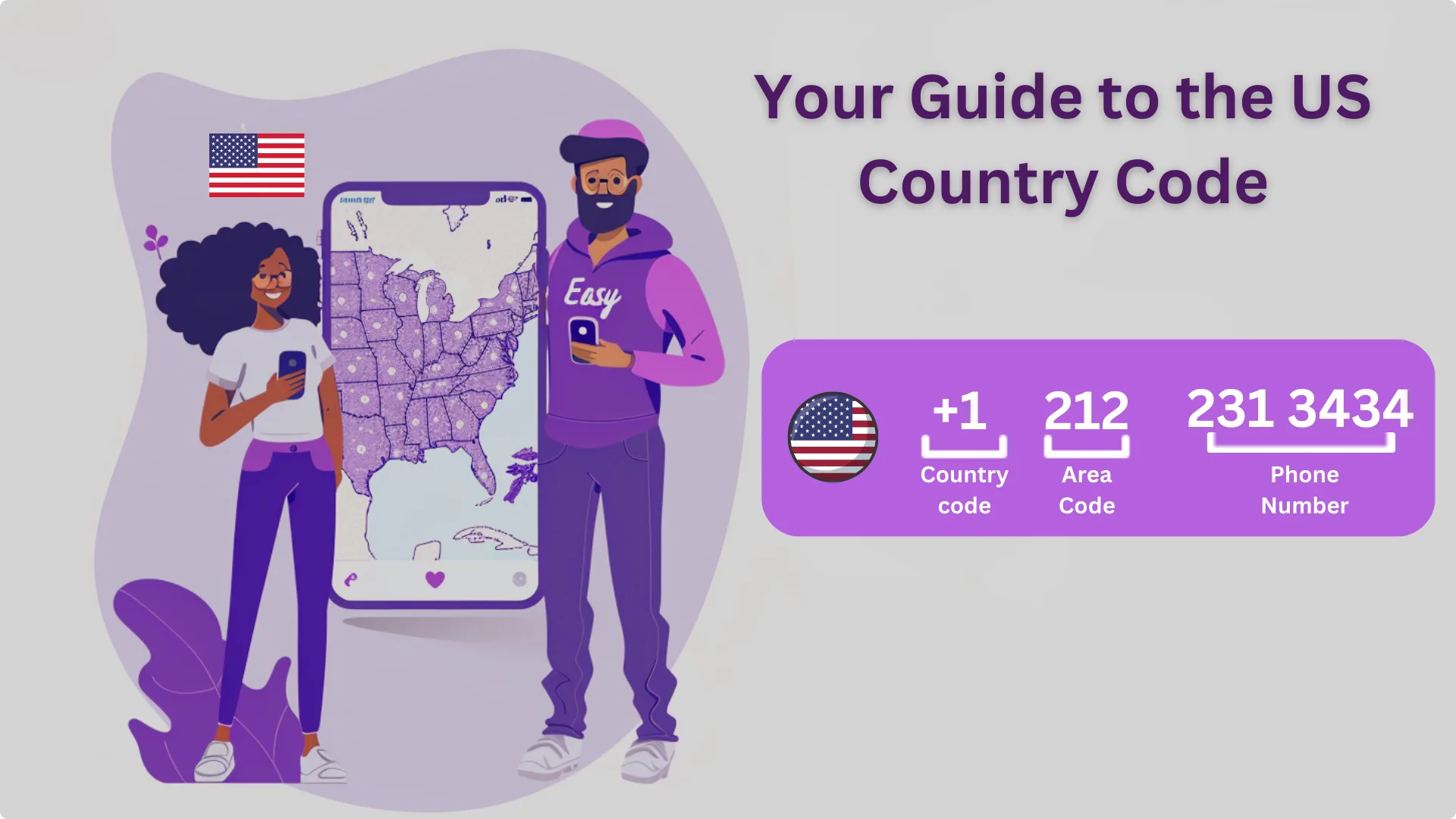Have you ever wondered about the structure of mobile numbers in the United States? From the format of US mobile numbers to the significance of area codes and carrier distinctions, there is much to uncover.
This article will delve into the different parts of a mobile number, the role of area codes, major mobile carriers in the US, and how these numbers support communication and connectivity.
Explore the world of US mobile numbers and their importance in telecommunications today.
Key Takeaways:
- US mobile numbers consist of multiple parts and digits, with various format variations.
- Area codes play a crucial role in identifying the location of a mobile number in the US.
- Carrier distinctions impact mobile number portability and play a significant role in the telecommunications industry in the US.
What Are United States Mobile Numbers?
Mobile numbers, including US phone numbers, are unique sequences of digits that facilitate communication by linking specific devices to telecommunication networks.
In the era of advanced technology, mobile numbers have transformed how we connect with one another. They serve as the foundation for making calls, sending messages, and accessing various mobile services. Each device is assigned a distinct identifier, ensuring that messages and calls reach the intended recipient accurately and efficiently.
Mobile phone numbers are often included in databases that provide information about the owner and related contact details, and international calling rates may vary between mobile phone numbers and landlines. Mobile numbers play a vital role in modern communication systems, offering individuals a convenient way to stay connected, whether for personal or professional reasons.
What Is the Format of United States Mobile Numbers?
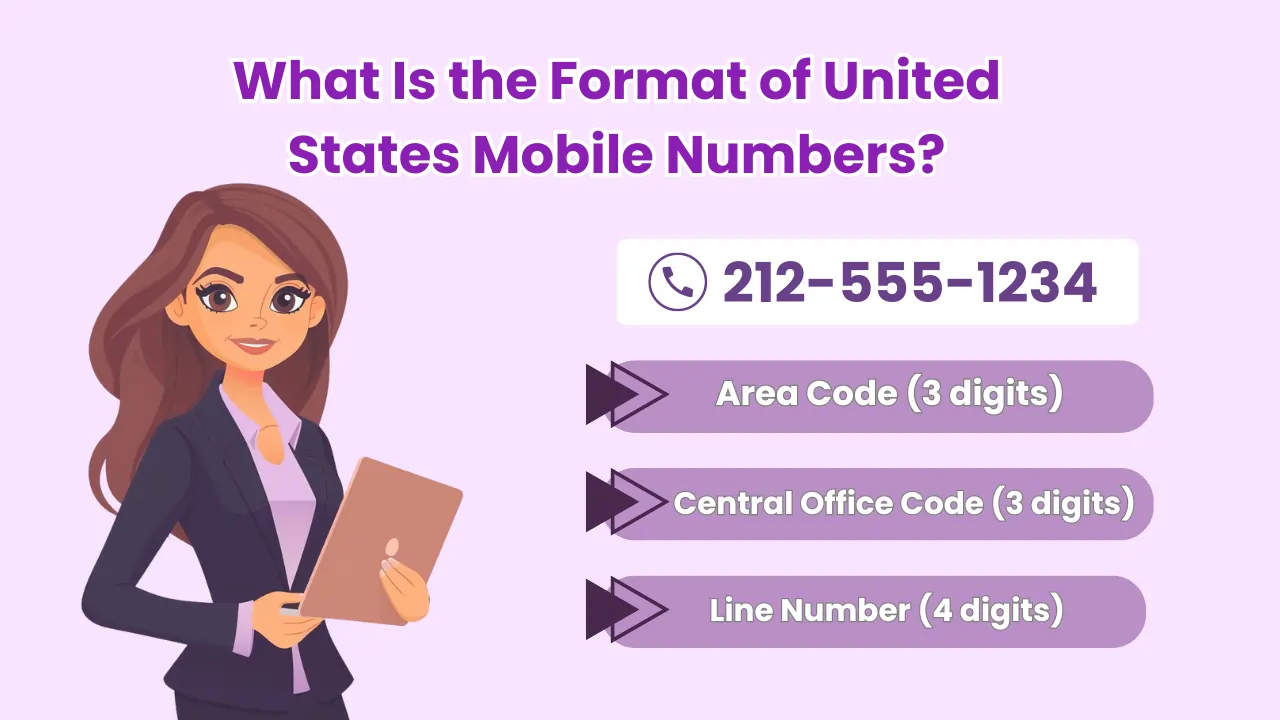
The format of United States mobile numbers incorporates a standardized structure, typically comprising an area code, a central office code, and a unique line number, often conforming to the NPA-NXX numbering system. Understanding the correct phone number format, including the US phone number format with country code, is crucial for effective communication and navigating the NPA-NXX numbering system.
What Are the Different Parts of a Mobile Number?
A US mobile number is divided into several parts: the area code, which identifies the geographic region, the central office code, and the unique subscriber number, forming the NPA-NXX numbering system.
Each component of the US mobile number plays a crucial role in how calls are routed and managed. The area code, usually comprising three digits, helps in pinpointing the general location of the phone number. It is essential to use the correct area code to ensure accurate call routing. Following the area code is the central office code, also known as the exchange code, which specifies the local exchange area. The unique subscriber number, typically the last four digits, distinguishes an individual phone line within a specific area and exchange. Together, these parts create a structured system that aids in directing calls efficiently across the country.
How Many Digits Are in a US Mobile Number?
A standard US mobile number consists of 10 digits, adhering to the 10-digit dialing system, which includes the area code, central office code, and line number.
The significance of the 10-digit format for US mobile numbers lies in the efficiency of communication it provides. By establishing this standardized format, the US ensures that users across the country follow a consistent numbering structure, making it easier to dial and locate individuals irrespective of their geographical location. This system also allows for the allocation of unique numbers to each device, reducing the chances of duplication and ensuring the smooth functioning of telecommunication networks. The 10-digit system enables reliable caller identification and facilitates call routing for enhanced connectivity.
What Are the Different Format Variations for US Phone Number Format?
The format variations for US mobile numbers can include differences in the presentation, such as parentheses around the area code or the use of dashes, especially when used by international businesses for clarity.
When dialing from abroad, it is important to include the US country code (+1) or USA country code to ensure the call is correctly routed. These variations in formatting also extend to how the numbers are dialed within the US. While domestic calls typically require the full 10 digits (area code included), international callers may need to include additional codes, such as the country code for the US (+1) before dialing the actual number. This distinction in formatting not only ensures seamless communication within the country but also facilitates smooth international calling processes.
Choosing the Right US Phone Number
The best US phone number for your business hinges on who you’re trying to connect with. Here’s a breakdown to help you make an informed decision:
- Local Businesses: If your customer base is concentrated in a specific city or region, a local phone number with a relevant area code is a golden ticket. It fosters a sense of community and makes you appear more accessible to local customers. Imagine searching for a plumber – wouldn’t you feel more comfortable calling a number with your local area code?
- National Businesses: For companies operating across the vast US landscape, a toll-free number is a game-changer. These numbers are free for callers within the US to dial, removing a potential barrier and making it easier for them to connect with you. Popular toll-free area codes include 800, 888, and 855. Think of it as offering a free gateway for customers across the country to reach you.
- International Businesses: Consider the US market segmentation you’re targeting. If it’s regional, a local number might be suitable. But for a nationwide audience, a toll-free number is a strong choice. Remember, some international callers might hesitate with toll-free numbers due to potential international charges on their end. Do some research to understand their preferences – a little planning goes a long way. Dialing formats and preferences may vary in other countries, so it’s important to consider these when choosing a US phone number.
Obtaining a US Phone Number
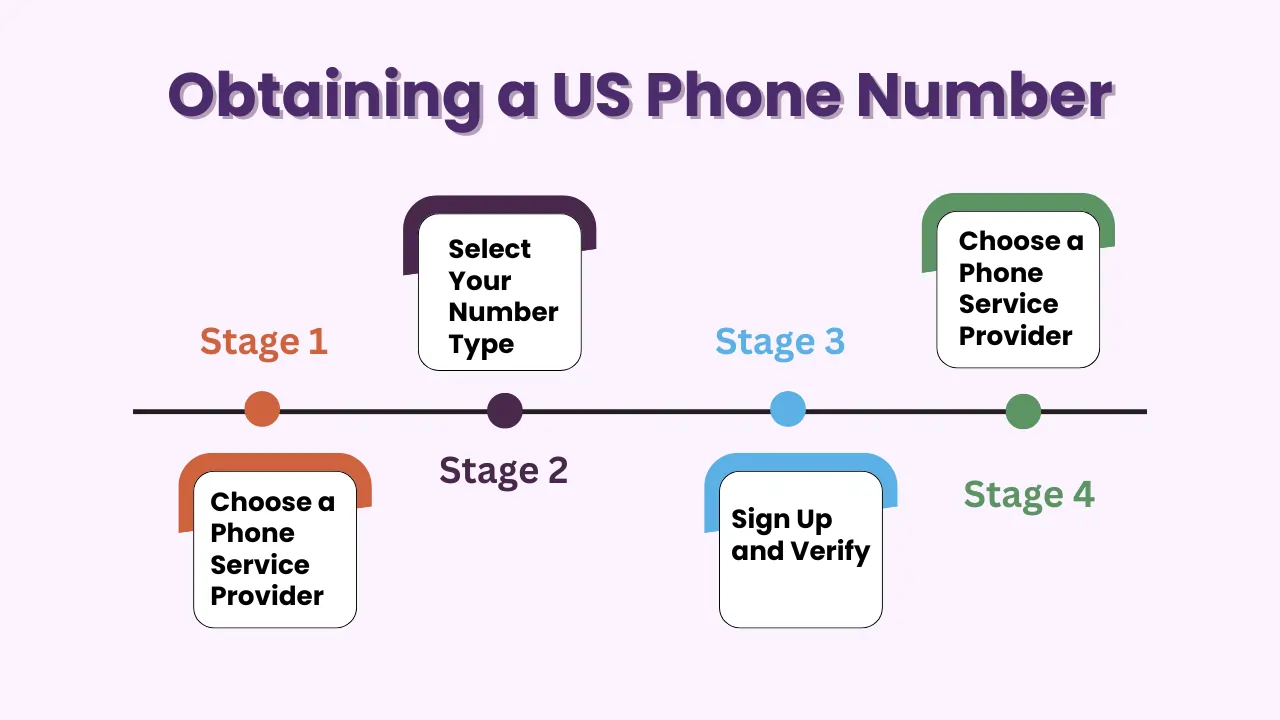
Getting a US phone number is relatively straightforward, whether you choose a local number, a national toll-free number, or even a virtual phone number that doesn’t require a physical location. Here’s the general process:
- Choose a Phone Service Provider: Several companies offer US phone numbers as part of their business phone services. Popular options include Google Voice, RingCentral, and Nextiva.
- Select Your Number Type: Decide on the type of phone number you need based on your target audience (local, national, etc.).
- Sign Up and Verify: Follow the provider’s registration process and verify your information.
- Start Using Your Number: Once activated, you can use your US phone number to make and receive calls.
What Are Area Codes and How Do They Work?
Area codes are integral components of US phone numbers, designed to delineate specific geographic regions and establish a local presence for telecommunication purposes.
When dialing a US number from abroad, it’s important to use the country’s international exit code before the US country code and area code.
What Is the Purpose of Area Codes?
The primary purpose of area codes is to facilitate the routing of local and long-distance calls by identifying specific geographic regions within the telecommunication system.
Area codes play a crucial role in streamlining communication networks and ensuring efficient call management. By assigning unique three-digit codes to different regions, area codes help in directing calls to the correct destination swiftly, regardless of the distance. This becomes especially important in urban centers where multiple cities may share the same area code, requiring additional digits for precise localization.
How Many Area Codes Are There in the US?
There are currently over 300 area codes in the US, each assigned to distinct geographic regions to manage the extensive volume of phone numbers required.
As the demand for phone numbers continues to grow with the proliferation of devices and telecommunication services, the allocation of area codes plays a crucial role in ensuring efficient communication networks. When a specific area exhausts its available phone numbers, a new area code needs to be introduced to provide additional capacity. This process involves careful planning and coordination to minimize disruption to existing phone users while meeting the escalating demands for new numbers.
The North American Numbering Plan Administration (NANPA) oversees the administration and assignment of area codes, making strategic decisions to maintain an organized and functional telephone numbering system across the nation.
What Are the Most Common Area Codes in the US?
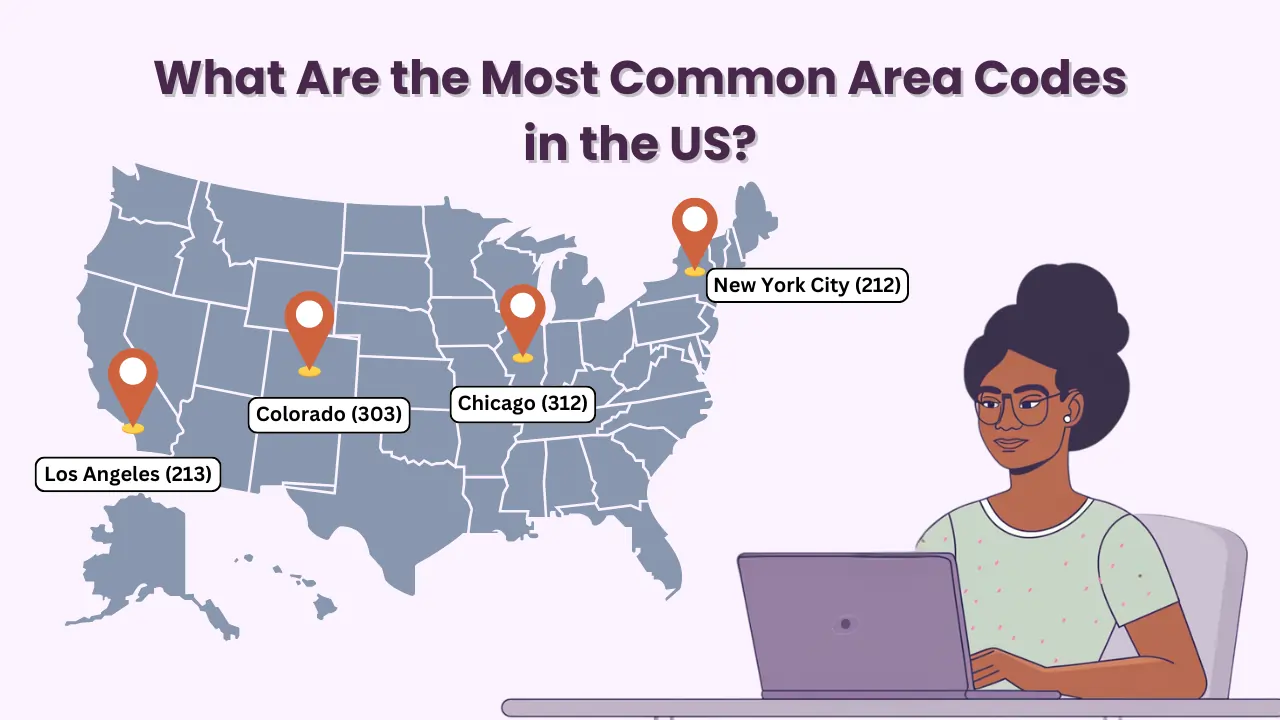
Some of the most common area codes in the US include 212 (New York City), 213 (Los Angeles), and 312 (Chicago), which are often associated with higher population densities and significant local numbers.
The 212 area code, for instance, is closely connected with the vibrant financial, cultural, and entertainment hub of New York City, reflecting the bustling metropolitan life of the Big Apple. Similarly, area code 213 serves the bustling city of Los Angeles, synonymous with the glitz and glamour of Hollywood. On the other hand, 312 signifies the urban charm of Chicago, a melting pot of art, architecture, and deep-dish pizza.
What Are Carrier Distinctions in US Mobile Numbers?
Carrier distinctions in US mobile numbers arise from the diversity of service providers, including traditional carriers and VoIP service providers, each offering unique features and plans.
What Are the Major Mobile Carriers in the US?
The major mobile carriers in the US include AT&T, Verizon, T-Mobile, and Sprint, each serving millions of US customers with a variety of plans and services.
- AT&T is known for its reliable network coverage across the country, offering a range of data plans for individual users and families.
- Verizon, considered to have the best coverage in rural areas, provides premium plans with high-speed internet and unlimited data options.
- T-Mobile stands out for its competitive pricing and perks like Netflix subscriptions included in certain plans.
- Sprint, recently merged with T-Mobile, offered budget-friendly options and unlimited data plans to its customers.
How Do Carrier Distinctions Affect Mobile Number Portability?
Carrier distinctions significantly impact mobile number portability in the US, as regulations require carriers to allow customers to retain their mobile numbers when switching service providers.
When a customer decides to switch to a new carrier while keeping their original number, the process, known as mobile number portability, kicks in. Each carrier has its own procedures in place for handling these requests. Some carriers have streamlined systems that make the transition seamless for customers, while others may have more cumbersome processes that prolong the transfer.
Challenges can arise during the porting process, such as delays, errors in transferring the number, or service disruptions. It’s crucial for carriers to work efficiently and communicate effectively to ensure a smooth transition for the customer.
What Is the Role of US Mobile Numbers in Telecommunications Today?
US mobile numbers play a crucial role in modern telecommunications by providing a reliable and accessible means of communication, enabling seamless connectivity across various platforms and devices.
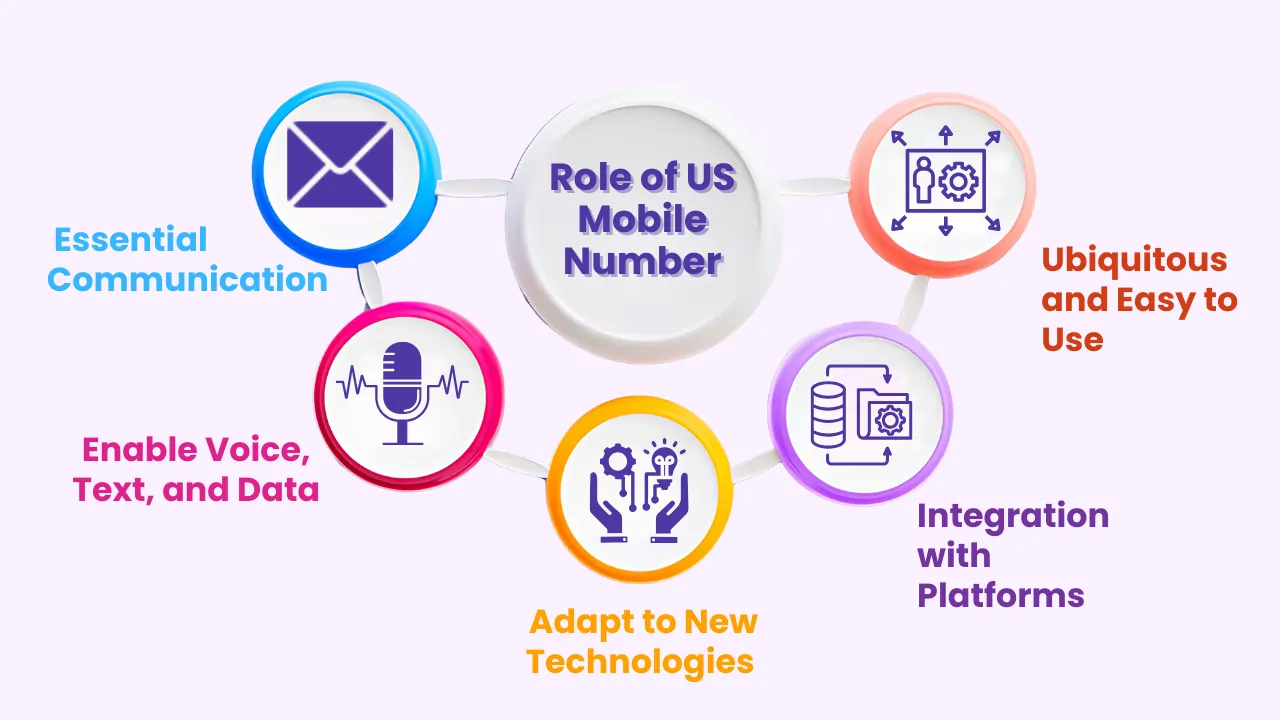
How Do US Mobile Numbers Support Communication and Connectivity?
US mobile numbers support communication and connectivity by linking individuals and businesses, facilitating voice calls, text messaging, and data services across various devices and platforms.
Along with traditional features like voice calls and text messaging, US mobile numbers have adapted to newer communication technologies such as VoIP applications and internet-based messaging services, offering a wide array of communication options.
Integration with social media platforms and email services has made it easier for users to stay connected with friends, family, and associates, all through the convenience of their mobile number.
What Are the Advantages and Disadvantages of US Mobile Numbers?
The advantages of US mobile numbers include their ubiquity and ease of use, while disadvantages may involve issues like spam calls and privacy concerns.
One of the main benefits of US mobile numbers is that they are widely accepted across various platforms and services, making them incredibly convenient for communication. They offer a seamless way for individuals to stay connected, whether it’s for personal or professional purposes. The simplicity of obtaining and activating a US mobile number makes it accessible to a wide range of users, from teenagers to seniors.
On the flip side, the prevalence of spam calls and telemarketing has become a major drawback of US mobile numbers. Many users find themselves inundated with unwanted calls, which not only disrupt their daily routines but also pose security risks. Privacy concerns arise as these numbers are often linked to personal information, making individuals susceptible to potential data breaches and cyber threats.
Conclusion
Understanding US mobile numbers goes beyond just memorizing a sequence of digits. They play a vital role in connecting individuals and businesses across the country. This guide has explored the different parts of a US mobile number, the significance of area codes, and the major mobile carriers in the US. We’ve also discussed how US mobile numbers support communication and connectivity in today’s digital age.
Whether you’re a local plumber or a nationwide company, choosing the right US phone number can significantly impact your business reach. By considering your target audience and the type of image you want to project, you can select a local number for a community feel or a toll-free number for wider accessibility. Remember, obtaining a US phone number is a straightforward process, with options for virtual numbers that don’t require a physical location.
So, leverage the power of US mobile numbers to strengthen your communication strategies and connect with your target audience effectively!
FAQ's
What is a United States mobile number?
A United States mobile number is a 10-digit telephone number used to identify and contact mobile phones in the United States.
How are United States mobile numbers formatted?
United States mobile numbers are typically formatted as (XXX) XXX-XXXX, with the first three digits representing the area code and the remaining seven digits representing the specific phone number.
Do all United States mobile numbers have the same area code?
No, United States mobile numbers do not all have the same area code. Area codes vary depending on the geographic location of the phone and can be used to determine the general location of the user.
Are United States mobile numbers portable?
Yes, United States mobile numbers are portable, meaning that users can keep their phone number even if they switch carriers or move to a different geographic location within the United States.
What do the first three digits of a United States mobile number represent?
The first three digits of a United States mobile number represent the area code, which is used to identify the geographic location of the phone.
How many United States mobile numbers are in use?
As of 2021, it is estimated that there are over 400 million active mobile phone numbers in use in the United States. This number is expected to continue to grow as mobile phone usage becomes more prevalent.
Can I use a US mobile number if I live outside the US?
What are vanity phone numbers?
Vanity phone numbers are phone numbers that are easy to remember because they spell out a word or phrase using the letters on the keypad. For example, 1-800-FLOWERS is a vanity phone number. Vanity phone numbers can be a great way to make your business more memorable and recognizable. However, they can also be more expensive than regular phone numbers.
How can I avoid spam calls on my US mobile number?
Unfortunately, spam calls are a common problem with US mobile numbers. Here are a few tips to help you avoid them:
- Do not answer calls from unknown numbers: If you don’t recognize the number, don’t answer the call. You can always let it go to voicemail and listen to the message later.
- Register with the National Do Not Call Registry: The National Do Not Call Registry is a government-run service that allows you to opt-out of receiving telemarketing calls. However, it is not foolproof, and some spammers may still call you.
- Use a call-blocking app: There are many call-blocking apps available that can help you identify and block spam calls. These apps can be a great way to reduce the number of unwanted calls you receive.
What is the future of US mobile numbers?
The future of US mobile numbers is uncertain. With the rise of communication apps like WhatsApp and FaceTime, some people believe that traditional phone numbers may become less important. However, mobile numbers are still essential for many purposes, such as two-factor authentication and accessing online accounts. It is likely that US mobile numbers will continue to evolve in the future, but they are likely to remain an important part of the telecommunications landscape for many years to come.

